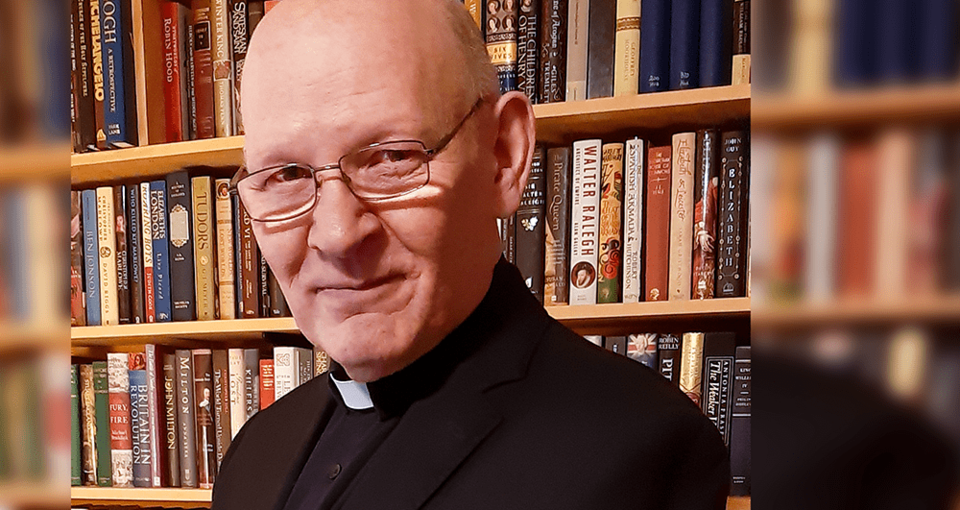At long last it seems that issues of racism and racial injustice are being addressed properly, or at least being at the centre of an informed and caring response. In the midst of all this we’ve some statues of notorious slavers and Confederate leaders being toppled and frankly the damned things should never have been there in the first place. There have also been calls by a minority of activists to remove or destroy depictions of “white Jesus” and his white family, and as a Christian and as a priest this obviously concerns me deeply.
The truth, of course, is that Jesus and his people were first-century Middle Eastern Jews, and while there was a certain variety of looks because of the mixed composition of the Mosaic exodus, most would have been dark-skinned and certainly not the Scandinavian messiah so readily and inaccurately depicted in churches.
Is it relevant, in that Jesus’s appearance matters far less than what he taught? Yes and no. The obsession with the iconography of a white Jesus has so infected the faith historically — and to an extent today — that Christians have felt enabled to treat people of colour appallingly.
This is most keenly seen in Christianity’s relationship with slavery. Few churches have clean records regarding the obscenity. As early as the 15th century, the Roman Catholic Church gave it official endorsement in a set of papal bulls. In the years before the U.S. Civil War, the church was one of the largest slave-owning entities in four states, and in South America, various religious orders enslaved countless men and women, working them to enormous profit.
The Church of England was an integral part of the emerging empire and did much to develop and institutionalize the transatlantic slave trade. When the British 1833 Slavery Abolition Act was passed, paying out £20 million pounds to slave owners across the British Empire, many of those who received this “compensation” were Anglican clergy. (Adjusted for inflation, today that’s nearly £1.9 billion pounds, or $3 billion Canadian dollars.)
The Methodists were nobler. Founder John Wesley denounced slavery as “the sum of all villainies.” Various non-conformist Christians outside of the mainstream were similarly convinced. As a church, the Quakers were the most vehement in standing against the evil of human ownership. And the Christian abolitionist movement, which produced heroic figures such as William Wilberforce and Thomas Clarkson in the late 18th and early 19th centuries, was extraordinary.
But this is the point, really: The abolitionists were extraordinary when they should have been ordinary. Their spirit should have been commonplace within organized Christianity, and they weren’t. Wilberforce and his followers were often opposed by other Christians, and those who weren’t actively against them were usually indifferent Christians who also struggled to end U.S. slavery, but others led the Confederacy. It’s a painfully disarming story, and the fact that so many Africans and people of African heritage remain faithful Christians is a tribute to their ability to see the authentic Jesus through the racist distortion and their invincible grace to forgive.
But this is the point, really: The abolitionists were extraordinary when they should have been ordinary.
The Bible itself is ambiguous. The Old Testament writes of slavery, often without censure and even with approval — this was, after all, an ancient and slave-based society. The New Testament may not be as absolute, but the few specific references to slavery are far from encouraging. What must be realized, however, is that while the Bible is of central importance to Christians, it’s not divine dictation. It can be taken literally or seriously — not both. Every word should be understood and lived through the Gospel-soaked filter of love, peace and justice. That should have made slavery impossible.
Over the centuries, churches have evolved and matured, with Christian institutions often confessing the darker sides of their histories. But it would be disingenuous to argue that the present is not somehow a product of the past. Former archbishop of Canterbury Rowan Williams put it well: “The Body of Christ is not just a body that exists at any one time; it exists across history and we therefore share the shame and the sinfulness of our predecessors.”
Ultimately, this shouldn’t be some morbid attempt at historical justification, but rather an opportunity to move forward with full disclosure and crisp transparency. Christians should be in a condition of permanent revolution and embrace the constant admission that we can be better and do more. So while I believe that most of the Jesus statues and pictures should stay because their removal would do more harm than good, any inequality and prejudice that surrounds them must be smashed to irreparable pieces. It’s the least we could do.
